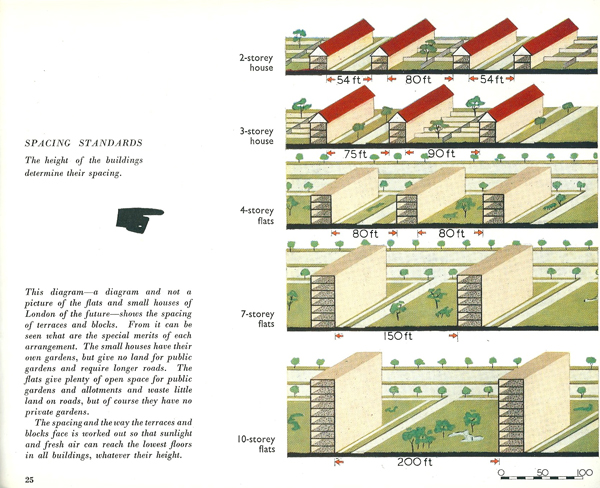What Planning can learn from Aspirin
byDavid Knight
First published in Future Frontiers: RCA Architecture Annual 2012.
Just as the vast majority of the world’s buildings are untouched by architects, the vast majority of humanity’s ailments are untouched by doctors and its worries by social workers. In each case, the professions provide a ‘top tier’ to a much larger economy, the majority of which takes place informally and socially. This was recognised in the design of such centralised services as the NHS, which would collapse in a matter of minutes if responsibility for sore feet and headaches passed into its hands from society at large. By comparison, our nationalised planning system – also 64 this year – has had a less-than successful relationship with its own limits.
Planning discourse in the 1940s was truly popular. Books about planning were bestsellers and people actually went out and bought The County of London Plan, or alternatively brightly-coloured explanations of it by figures like Ernö Goldfinger (image below). This phenomenon, perhaps best summed up by Ralph Tubbs’ 1942 call to arms ‘We Must Plan Now’, led to the nationalisation of the right to build via the Town and Country Planning Act, in which Tubbs’ idealised wartime collectivism was overwhelmed by the notion of the apolitical professional planner working for the greater good. Planning was most popular at the moment of its leaving the public domain.
Though planning has evolved endlessly since 1948, incorporating many participatory models (including, recently, a variety of on-line tools and visualisation aids), the public remain outsiders. We participate in the games and protocols of planners and developers without seeing the rules: a situation which makes the won’t-budge culture of NIMBYism almost inevitable. The vast majority of the world’s planning is done by planners.
Herbert Gans wrote in 1977 that the professions ‘supply only a minor portion of the product or service over which they claim expertise,’ noting that a key difference between professional and non-professional services is that of style: ‘Doctors often treat patients as collections of diseases rather than people, and, like sociologists and social workers, supply their services in a technical language that puts off their patients and clients.’ The implication is that the substantial informal end of each discipline also has its own style, rooted in a shifting vernacular and popular culture.
Maybe, in theory, it would be OK if all planning were done by apolitical professionals, who are paid to consider possible futures in relation to an array of complex variables. Anyone who has been dragged into planning-related community activism will know that the public rarely have time to plan. In practice however it is not OK: those activists will also know how profoundly the application process, and indeed the policy that underlies it, are wedded to party-politics at both local and national levels. In effect, our elected representatives plan all the time, inevitably with half an eye on their voters. Furthermore, 72% of current Neighbourhood Plans are taking place in Tory-controlled authorities, meaning that both planning decisions and planning policy are wedded to party-political concerns. The general public are actually a minority.
To address this situation, we must recognise the potential of micropolitical popular culture to act as a counterpart to the local and national politics of the current planning system. We do not need to abolish state planning (the much-mythologised ‘Non-Plan’) but instead must locate non-professional and non-institutionalised action as a valid, potentially antagonistic player in its practices. As Hilary Wainwright argues, socially-organised knowledge at the popular level is a crucial factor in the gaining of political power.
Furthermore, if this process is to be more than site-specific, we need more from built environment professionals than interlocution. We need a systemic, useful and accessible tool that intertwines current state planning processes with a broader set of tools drawn from the history of popular placemaking. The global tradition of the ‘One-Night House’ (in which a community comes together to build a house between dusk and dawn) should be on the same page, literally and figuratively, as the coalition’s new and untested ‘Community Right to Build’. In this way Fiske’s notion of the ‘untapped social resource’ of popular culture might be brought to bear on our culture of planning.

